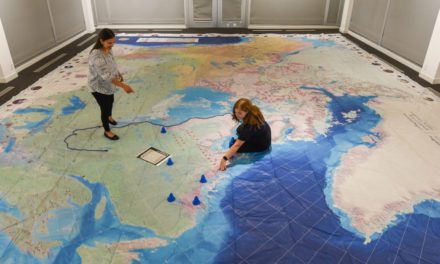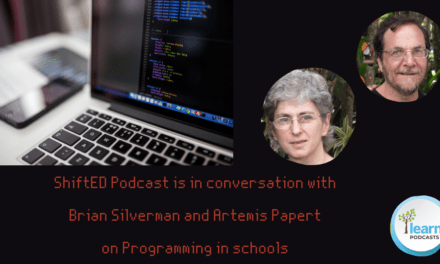What can we do at our schools, in our communities and across the province to promote change and get girls more involved in technology? Feel free to start the conversation below or with a tweet @learnquebec.
I had the pleasure of attending an information and round table session with Anne Shillolo at Bring IT Together 2014. Anne is the Coordinator of Educational Technology, and eLearning Contact, at the Near North District School Board in Ontario. During Anne’s workshop, By Design: Engaging Girls in Tech, I learned a number of interesting facts about the role of women in the history of technology, specifically modern computing. For example: Did you know that Hedy Lamarr (yes, the 1940’s Hollywood starlet!) is the inventor of the frequency-hopping spread spectrum technology used as a foundation for modern Wifi, Bluetooth and GPS? I also found out some surprising and disheartening truths. Did you know that the wage gap for women not only persists but gets wider as one’s level of education goes up? Did you know that the percentage of female computer science grads has declined dramatically since the mid 80’s? All the while, thousands of highly paid programming jobs go unfilled each year. According to Anne (and others), one possible solution to these problems is to engage girls in technology as early and as often as possible in order to encourage the prospects of a career in ICT.
But how?
In the fall, I participated in a McGill/Learn seminar with esteemed developmental psychologist Howard Gardner. During the final Q&A, he was asked by a teacher in the audience what essential skill or knowledge should we be teaching our students in order to equip them for the world of tomorrow. His response: coding. My colleague, Susan van Gelder, an early adopter and teacher of technology, wrote an excellent piece last year about the importance of getting our youngest students interested in coding. In To Code: Forward 2014, Susan shares how her students were empowered by their Logo experience and learned “procedural thinking, problem-solving and debugging”.
If you need more proof that programming is something that all students should be learning, perhaps Bill Gates and Mark Zuckerberg can convince you in this short video, What Most Schools Don’t Teach:
So, we definitely have ideas in terms of how to get kids excited and engaged with technology at an early age. However, one of the major obstacles in the implementation of school-wide computing programs, as pointed out by Anne’s research, is that there is simply a shortage of teachers able to teach these courses. Currently, in Ontario, only three faculties of education offer Computer Science qualifications and one of them (Queen’s) is in the process of phasing it out. Not surprisingly, fewer than one third of Ontario High schools offer even a single computer science course.
Thankfully, some institutions are mandating that their teachers complete training in programming in order to teach it. And, then there are the brave individuals who are taking it upon themselves to learn to code. You can read all about teacher Audrey McLaren’s foray into the world of coding and her participation in National Ladies Learn to Code Day in A Teacher Learns to Code.
Personally, I think computing has always had a serious image problem, particularly for girls. I remember my computer science class circa 1985. The classroom was tucked away, in the nether regions of a sprawling Toronto high school. Dark and unfriendly, the room was littered with towers, wires and computer guts. Frankly, the learning space itself did not speak to my design sensibilities and make me want to get creative … it made me want to run away! Add to that a complete lack of awareness on my part in terms of the possibilities of a career in computer science, and the fact that the Internet was not even on my radar, and well, I couldn’t see the importance or relevance and simply wasn’t interested.
Thirty years later and there are so many more sub-areas of computer science, like graphics, human-computer interaction and computational biology, and as educators we need to get the word out. Computing should not be seen as a solitary, boring, dare-I-say geeky endeavour, but as a way to solve real-world problems in collaboration with others.
What do you think?
++++++++
Here are some great sites and organizations that Anne highlighted during her workshop that promote women in technology, educate and inspire:
You can follow Anne @anneshillolo.







For the last two years, LEARN has been supporting in a number of ways a local initiative tied to coding for children and with an emphasis on girls participating. The response has been great. We had two summer school sessions that were well attended, and clearly we see a demand and interest for this type of service. Interestingly, and in the context of this blog, one of the instructors is a young lady whose brilliance and passion were clearly evident when we met at the start of this project.
Thanks Kristine for writing about this. Very important subject and thought-provoking
I would like to add to your history of women and computing. Ada Lovelace, daughter of Lord Byron (the poet) is considered the first computer programmer. She worked with Charles Babbage and wrote the algorithm to be carried out by his Analytical Engine. You can read more about her here: https://www.sdsc.edu/ScienceWomen/lovelace.html
As to getting girls involved in computing – with the advent of programs that seemed to do everything (word-processors, photo editors, web design programs…) there was a move away from teaching programming at all levels from elementary school through university and computer classes became using software classes. Computer science became more and more the domain of “geeks.” We need role models – female teachers, gamers, designers to inspire girls and who show the many ways programming can appeal to females.
For the artists around, try playing with Turtle Art http://turtleart.org/ – a fun way to start programming.